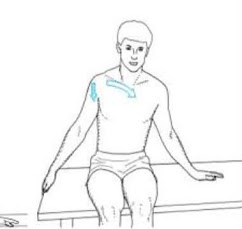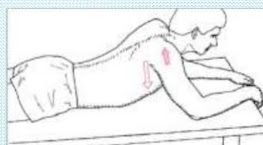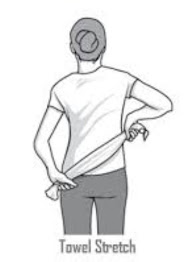Introduction
Frozen shoulder is a common name for adhesive capsulitis or periarthritis. It is characterized by the development of dense adhesions,capsular thickening and capsular restrictions.The movement or the range of motion (ROM) of the shoulder it is restricted or limited.
The scar tissue is seen developing overtime, as a result your shoulder joint does not have enough space to rotate properly.
Some of the common symptoms include swelling,pain and stiffness. You are likely to have the condition of if you are of age between 40-65 years.
Clinical signs and symptoms
This clinical entity progress through a series of four stages:
Stage I
Characterized by a gradual onset of pain that increases with movement and is present at night.Durartion is less than 3 months.Loss of external rotation is seen.
Stage II (Freezing Stage)
Characterized by persistent and more intense pain even at rest.Motion is limited in all directions.
Stage III ( Frozen Stage)
Characterized by pain only with movement, significant adhesions and limited glenohumeral motions.Atrophy of the deltoid,rotator cuff,biceps and triceps brachii may be noted.
Stage IV (Thawing Stage)
Characterized by minimal pain and no synovitis but significant capsular restrictions from adhesions.Motions may gradually increase by this stage, improvement in movement. This stage lasts for 15 -24 months after onset.Some patients never regain their normal range of motion (ROM).
Causes
There is no particular reason or specific reason for adhesive capsulitis.But people with hormonal imbalance and weak immune system may be prone to joint inflammation.
Although it is more likely to occur in people who have diabetes or those who had their shoulder immobile for longer period of time for instance after surgery or arm fracture.
Exercises for shoulder
Exercises mainly consists of self mobilization techniques and home program.
*:Self mobilization:*
Caudal Glide
Patient position and procedure:
- Sit on a firm surface.
- Grasp your fingers under the edge.
- Then lean the trunk away from the stabilized arm.
- Sit with both arms behind the body or you may lie in a supine lying position supported on a solid surface.
- Lean the body weight between the arms.
- Lie on a prone lying position propped up on both the elbows.
- The body weight shifts downwards between the arms.
- Wall climbing to the side.
- Wall climbing to the front.
- Stand with your side to the wall.
- With your finger just touch the wall at an angle of 30 dergree.
- Now,walk the fingers injured adhesive hand as high as possible until the limit the pain permits.
- Do not shrug your shoulder up towards your ear as you move your arm up.
- Hold the position for 15-20 seconds.
- Walk your fingers down.
- Repeat 2- 4 times trying to reach higher each time.
- Stand in front of to a wall.
- With your fingers just touch the wall at an angle of 30 degree.
- Now,walk your fingers of your inured adhesive hand as high as possible until the limit the pain permits.
- Do not shrug your shoulder.
- Hold the position for 15- 20 seconds.
- Walk your fingers down.
- Repeat 2-4 times trying to reach higher each time.
- Relax your shoulder.
- Stand and bend slightly downwards so that your affected arm hangs down.
- Swing the arm in a small circle ( about a foot in diameter).
- First clockwise then anticlockwise.
- Perform 10 repetitions in each directions once a day.
- Hold the towel in a horizontal position.
- Now ease your good arm to pull the affected arm upward to stretch it.
- Repeat this exercise 10 to 20 times in a day.
- Sit or stand in a comfortable position.
- Use your good arm to lift your affected arm to the elbow, and bring it up and across your body, exerting gentle pressure to stretch the shoulder.
- Hold the stretch for 15 to 20 secs.
- Do this 10 to 15 times per day.
- Use your good arm and lift the affected arm onto a shelf about a chest high.
- Now gently bend your knees opening up the armpit.
- Slowly bend your knee deeper until you feel a good stretch.
- You need a resistance band between your hand with your elbow at 90 degree angle close to your sides.
- Now rotate the lower part of the affected arm outward about 2 to 3 inches and hold for 5 secs.
- Repeat 10 - 15 times once a day.
- Stand next to a closed door.
- Hook one end of a resistance band around the door knob.
- Hold the other end with the hand of the affected holding your elbow at an angle of 90 degrees.
- Pull the band towards your body 2 to 3 times hold it for 5 seconds.
- Repeat it for 10-15 times per day.

























0 Comments